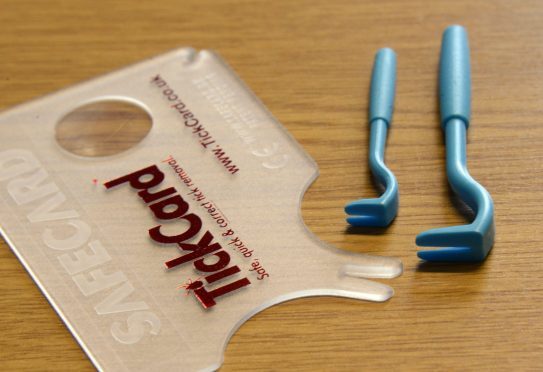Getting bitten by a tick is a bit like playing Russian roulette, but the odds of avoiding Lyme Disease are in our favour, according to a Highland GP.
About 10% of the voracious insects carry the Lyme disease bacteria and their victims are unlikely to get the debilitating illness if the tick is removed promptly and correctly.
Dr Jim Douglas, who has developed a professional interest in Lyme disease, is warning anyone venturing out into the great outdoors to be aware of the risk at the start of this year’s tick season.
He explained that ticks had a two-year life cycle and were present all year, but were only dangerous to humans during the “questing nymph” stage, for which the peak times were spring and autumn.
Dr Douglas, of Tweeddale Medical Practice at Fort William Health Centre in Lochaber, said: “At this stage, they are about the size of a poppy seed.
“Everyone thinks it’s the big ones that are a problem, but the tiny ones are the most risky.
“Not all ticks carry the germs for Lyme disease. At any time, there’s only about 10 per cent, depending on the area of the country and other factors that we don’t understand yet.”
He added that they were usually picked up while walking through bracken or other vegetation.
The GP said: “Just because you’ve been bitten by a tick doesn’t mean you’ve got Lyme disease.
“The crucial thing is trying to lift the tick off correctly using one of the plastic removal devices available.
“I would like people to put these devices in their rucksacks, first aid boxes and glove compartments of their vehicles so they are always available when they come off the hill or finish work.”
He is also urging people to get someone else to check the parts of their body they cannot see themselves after they have been outside.
Dr Douglas added that Deet-based insect repellents could help to prevent tick bites.
He said: “If somebody has been bitten by a tick and develops a rash around it, they should make an appointment to see their doctor and photograph the rash, as it often disappears.
“Any redness around a tick bite from a 10p size upwards should raise concerns.”
If left untreated, or not treated early on, later symptoms of Lyme disease include pain and swelling in the joints, problems affecting the nervous system, heart problems and inflammation of the membranes surrounding the brain and spinal cord.
